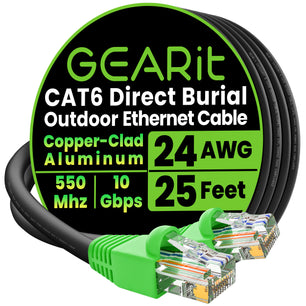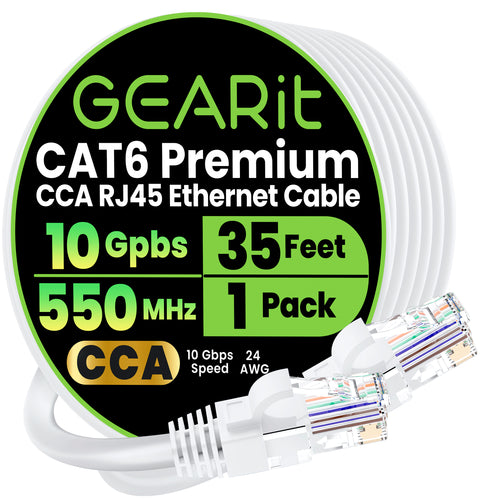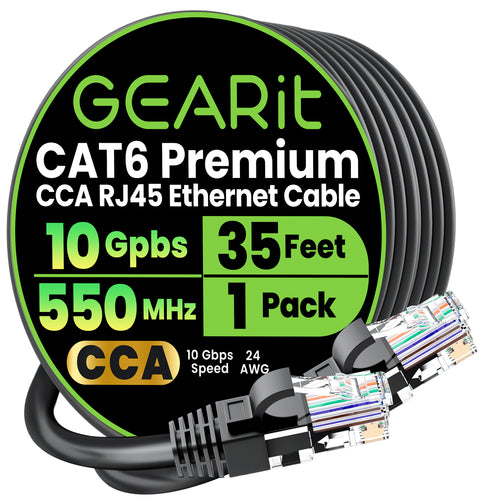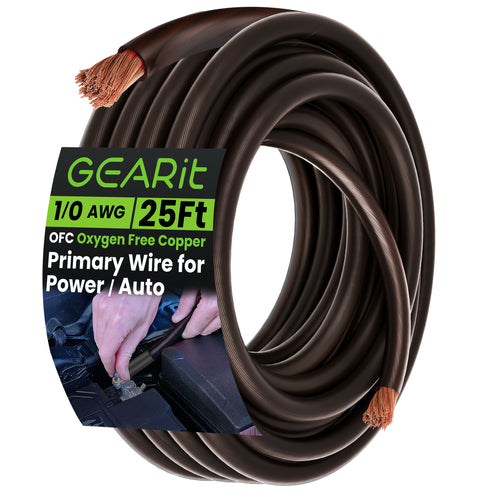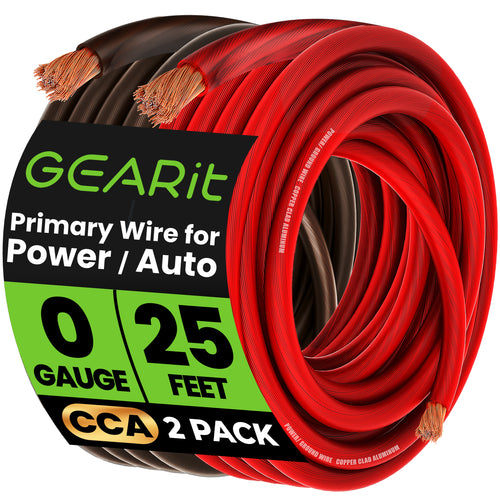Running Ethernet cables alongside electrical wiring can cause signal interference. To avoid issues, maintain a minimum distance of 8-12 inches, use shielded cables (like Cat6), and avoid parallel runs wherever possible. Proper planning ensures reliable network performance.
Get the best Ethernet cables and electrical wires from GEARit:
Shop GEARit now for top-quality cables to keep your connections fast and interference-free! ⚡🔌

In today's interconnected world, setting up a reliable network is essential, whether at home or in a commercial setting. Many find it convenient to run Ethernet cables alongside existing electrical wiring. However, there are crucial safety and compliance considerations to keep in mind to ensure the integrity of your network and adhere to regulations. In this article, we'll explore the key concerns, regulations, and best practices for running Ethernet alongside electrical wiring.
Safety Considerations:
A primary concern when running Ethernet cables alongside electrical wiring is the potential for electromagnetic interference (EMI). Electrical wires carrying alternating current (AC) emit electromagnetic fields that can disrupt the signals transmitted through Ethernet cables, leading to performance issues and connectivity problems.
Moreover, there's a risk of electrical hazards if precautions aren't taken. While Ethernet cables are low-voltage, contact with live electrical wires could damage the cables or, worse, result in electrical shocks or fire hazards.
Compliance with Regulations:
Adhering to relevant regulations and standards is essential for ensuring safety and compliance. Electrical and building codes, such as the National Electrical Code (NEC) in the United States, outline guidelines for the installation of low-voltage wiring alongside electrical wiring. These regulations typically recommend separating low-voltage wiring, including Ethernet cables, from electrical wiring to minimize interference and hazards.
Best Practices for Installation:
To ensure a safe and compliant installation when running Ethernet alongside electrical wiring, consider the following best practices:
1. Maintain Physical Separation
Whenever feasible, keep Ethernet cables and electrical wiring physically separated. Use separate conduits or cable trays to prevent them from coming into contact.
2. Choose Shielded Cables:
Shielded Ethernet cables offer better protection against electromagnetic interference. Consider using shielded cables, especially in areas where Ethernet and electrical wiring must run close together.
3. Careful Cable Routing:
Route Ethernet cables away from electrical wiring to avoid contact. Secure cables with ties or clips to prevent interference and ensure safety.
4. Grounding Measures:
Proper grounding of both Ethernet and electrical systems is crucial to mitigate hazards and interference. Follow manufacturer guidelines and local regulations for grounding requirements.
5. Seek Professional Advice:
If you are uncertain about safety and compliance requirements, consult qualified electricians or network installers. Their expertise will ensure your installation meets all necessary regulations.
Creating a Safe & Reliable Network
While running Ethernet cables alongside electrical wiring offers convenience, safety and compliance should always be top priorities. By understanding the risks of interference and adhering to regulations and best practices, you can create a safe & reliable network installation. Whether for a home network or commercial infrastructure, GearIT has the cables you need to create a safe & reliable network.
